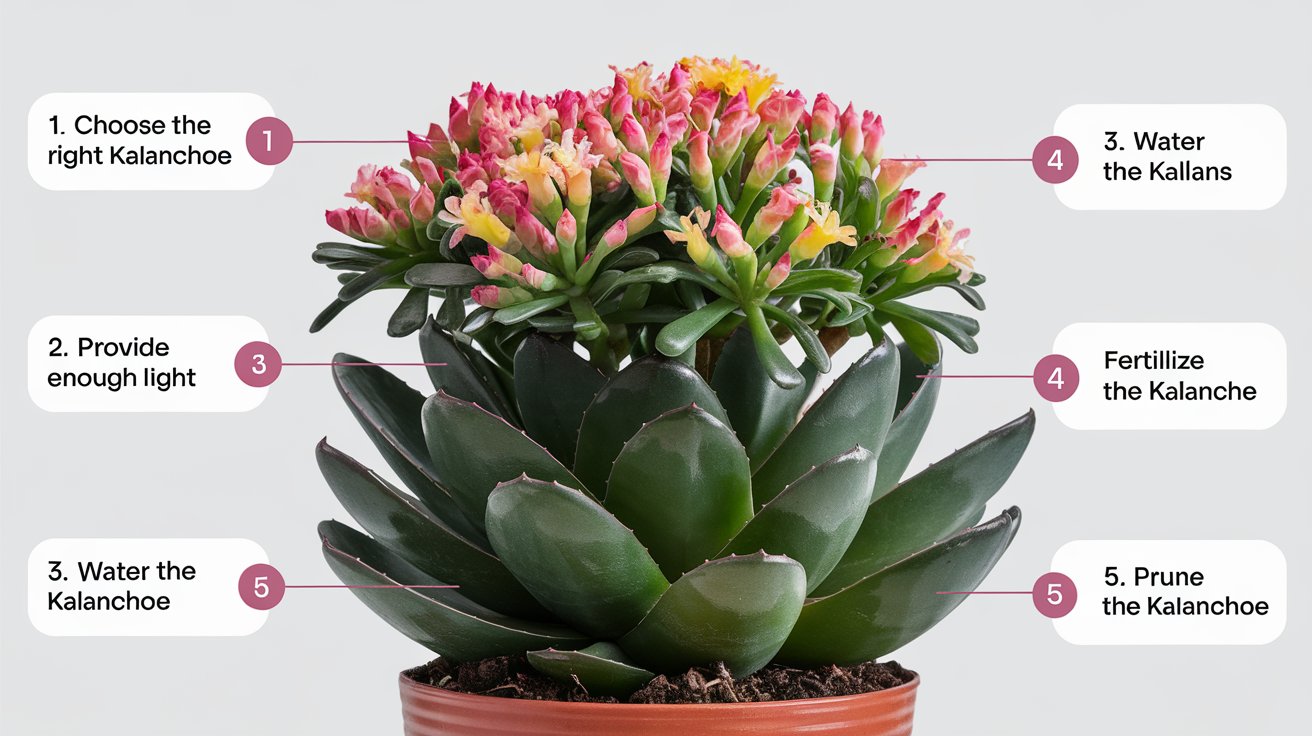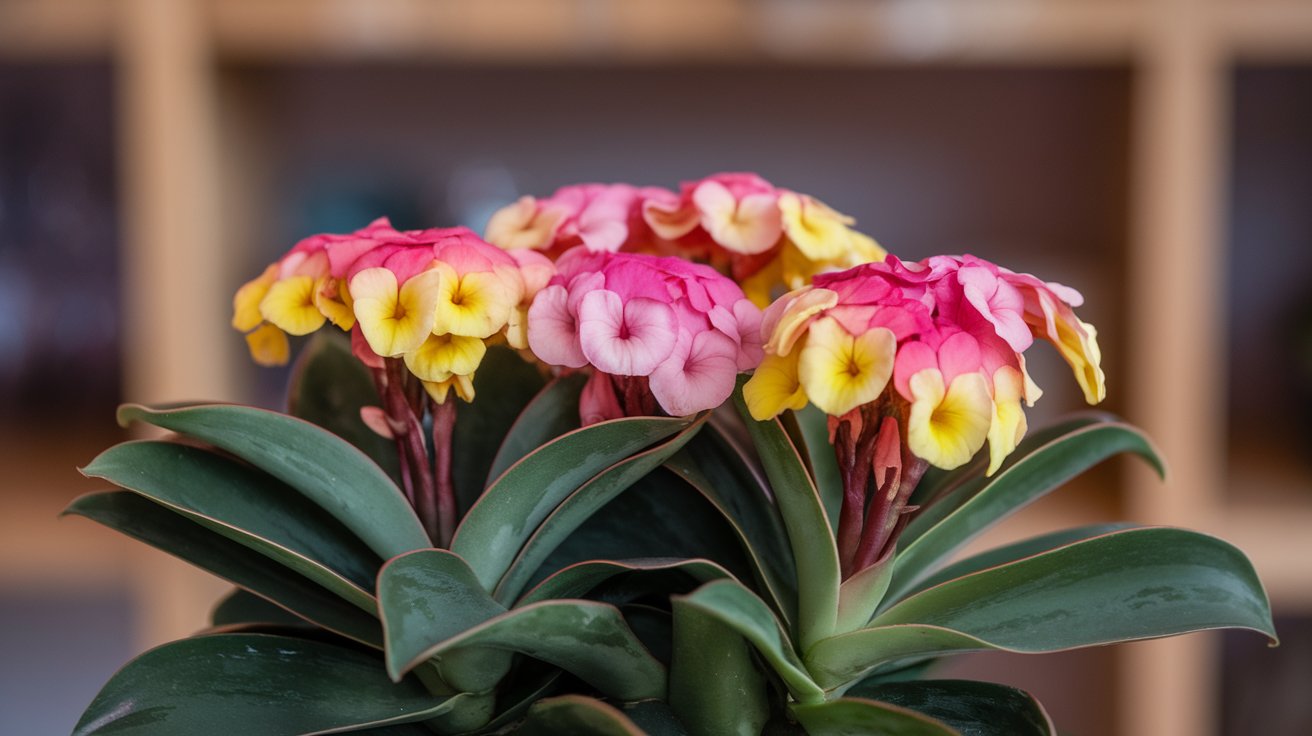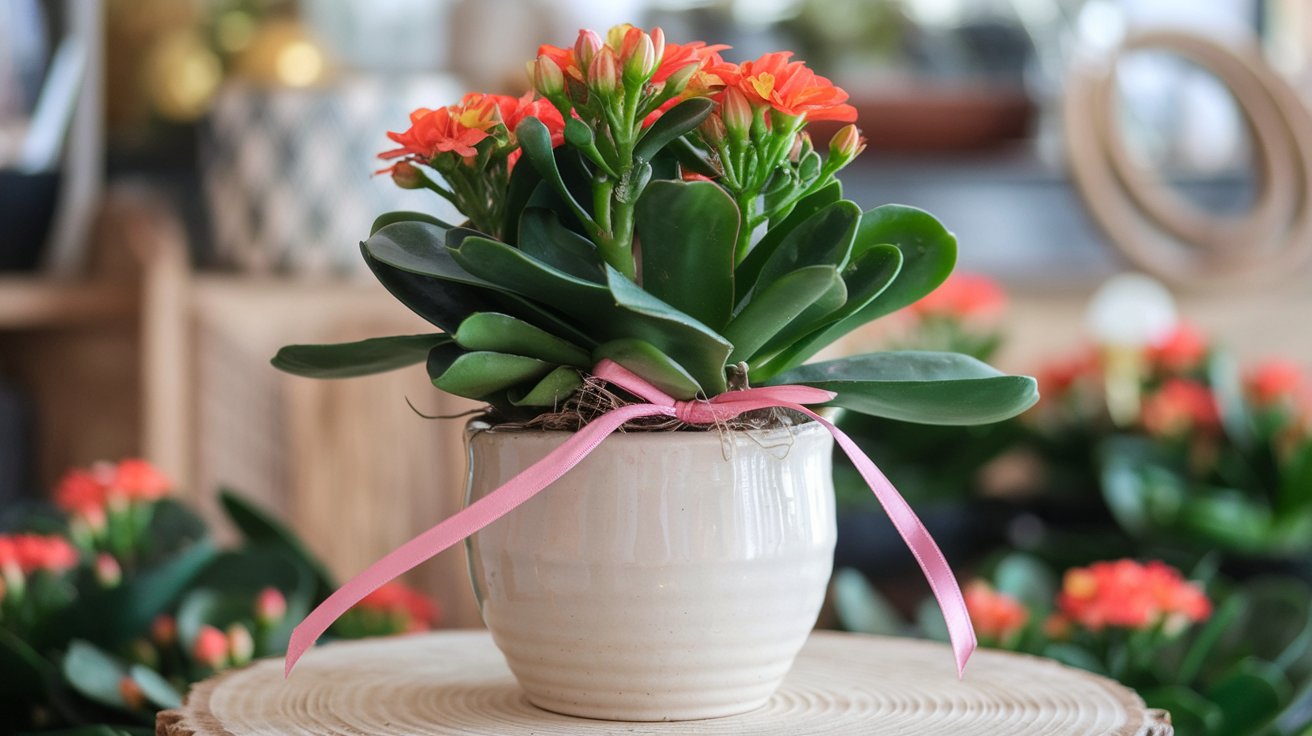It is a beautiful Kalanchoe plant is a stunning succulent renowned for its striking flowers and low maintenance requirements that make it ideal for both novices and experienced gardeners. With its vibrant colors, lengthy bloom time and simple propagation techniques the plant is a top choice for both outdoor and indoor landscaping too. This guide will help you with everything from picking the correct kind of Kalanchoe to identifying the specific needs of Kalanchoe to ensure that you appreciate this gorgeous plant at home or in your garden.
Table of Contents
1. Introduction to Kalanchoe Plants
This Kalanchoe plant is a succulent indigenous to Madagascar and its capacity to store water within its fleshy, thick leaves lets it thrive in dry, desert conditions. Because of its durability and appealing appearance, Kalanchoe is now a well-loved plant for the home particularly in areas with climates that are temperate.
Kalanchoe plant is a well-known flower for its bouquets of vibrantly colored flowers. They may range from red to yellow, pink or orange, based on the varieties. The flowers last for weeks, bringing an element bright color in any area.
Kalanchoe plant Blossfeldiana is among the most popular varieties of Kalanchoe that is adored by its small size and vibrant blooms. There are more than 200 species within the Kalanchoe Genus, which offers many options for gardeners.
2. Types of Kalanchoe
Understanding the different varieties of Kalanchoe will help you select the right one for your garden or home. Here are a few of the most popular varieties:
1. Kalanchoe blossfeldiana
This one is among the most sought-after and widely grown because of its gorgeous and long-lasting flowers. Kalanchoe blossfeldiana is usually available in garden centers and can be used in beautiful arrangements for indoors. The flowers are typically available in vivid hues of pink, red white, and yellow.
2. Kalanchoe tomentosa (Panda Plant)
Panda Plant is adored by its silver-green, fuzzy leaves with reddish brown tips. It’s less well-known for its flowers, but is valued for its leaves. The soft texture of leaves gives a unique look to the succulent collection.
3. Kalanchoe daigremontiana (Mother of Thousands)
The variety is able to produce tiny plantlets on their edges that eventually die and become new plants. This intriguing feature is what makes Mother of Thousands Mother of Thousands an excellent option for gardeners who enjoy propagation projects.
4. Kalanchoe Thyrsiflora (Flapjack)
Also called The “Flapjack” or “Paddle Plant,” this Kalanchoe variety is characterized by its large paddling-like, flat leaves. The leaves of this variety are usually shaded red, particularly when exposed to bright light which makes it an attractive feature in any garden.
3. How to Grow Kalanchoe

Growing Kalanchoe plant is easy due to its robust nature and low maintenance needs. Here’s a step-bystep guide on how to cultivate Kalanchoe:
Step 1: Choose the Right Location
Kalanchoe plant thrives in indirect, bright sunshine. To grow indoors it is recommended to locate the plant close to an east or west-facing windows is the best. If you’re cultivating Kalanchoe outside, put it in an area which receives morning sun, however is shady during the hot time of day.
Step 2: Select the Right Pot
Kalanchoe plant requires a pot with adequate drainage to stop water from accumulating on the roots. Pick a pot with drainage holes, and stay clear of pots that keep water. Terracotta and clay pots are great since they permit excess water to evaporate faster.
Step 3: Use Well-Draining Soil
The most suitable dirt to plant Kalanchoe is one which is well-drained. Cactus or succulent mixes with perlite or sand added is perfect for improving drainage and stopping root decay.
4. Ideal Soil for Kalanchoe
Kalanchoe plant are tolerant of moist soil, therefore choosing the right soil mix is essential to ensure good growth. Cactus or succulent soil mix, that is the elements of perlite, sand, as well as organic material, gives the drainage that is required for Kalanchoe.
If you’d like to create an own mixture, mix equal parts of potting soil perlite, and sand. pumice. The idea is to create an aerated soil that dry quickly, which reduces the possibility of fungal diseases or decay.
5. Watering Needs for Kalanchoe
One of the most important aspects of taking care of Kalanchoe is knowing its water requirements. Being a succulent, Kalanchoe conserves water within its stems and leaves and stems, which allow it to live for longer without watering.
How Often to Water:
- In the growing season (spring as well as summer) It is important to water the plant after the top 2 inches of soil is dry. This typically happens every two weeks.
- In the winter and fall cut down on watering to just each 2-3 weeks since plants’ growth slows.
Watering Tips:
- Then, water thoroughly until the excess water drains away at the base of the saucepan. Be sure to dispose of any excess water that has accumulated within the saucer.
- Do not water the leaves in a direct manner, because this could cause decay.
6. Sunlight Requirements
Kalanchoe plant thrives in indirect, bright sunlight. Insufficient direct sunlight could cause the leaves to burn, and the absence of sunlight could make the plants grow weak and leggy. Here’s how to get the proper amount of light to your Kalanchoe:
- Kalanchoe for indoor use: The plant should be placed close to a window that gets indirect sunlight at least 4 to 6 hours per day. Windows facing east and west are the best. If your plant begins to spread or the leaves become pale, it could not be getting enough sunlight.
- Outdoor Kalanchoe: In warmer climates, Kalanchoe can be grown outdoors in shade. Be sure to avoid putting it in areas that receive direct, intense sunlight in the middle of the day, since it can cause burns to the leaves.
7. Temperature Tolerance

Kalanchoe plant is perfectly suited to warmer climates, however it can’t take frost. The optimal temperatures for Kalanchoe is 60degF to 85degF (15degC to 29degC). In colder climates it’s recommended to plant Kalanchoe inside or bring it inside in the winter months.
Tips for Winter Care:
- Be sure to keep the indoor Kalanchoe away from drafts of cold air or windows in winter.
- If your region has mild winters, Kalanchoe can be planted in the garden all year long, but be sure to protect the plant when temperatures fall below 40 degrees Fahrenheit (4degC).
8. Fertilizing Kalanchoe
Kalanchoe plant doesn’t require any heavy feeding, however fertilizing it in the spring and summer months can increase the number of blooms and improve the health of leaves. Make sure to use a water-soluble, balanced fertilizer, dilute to half strength every month in months of summer and spring.
- Fertilizer Type The 10-10-10 fertilizer or the 20-20-20 balance can be used.
- The frequency of fertilization: Fertilize once a month in the season of growth. Stop or reduce fertilization in winter and fall.
9. Pruning and Maintenance
Kalanchoe plant is a fairly low maintenance plant, however regular pruning can help keep its appearance tidy and promote more blooms. Pruning can help keep the plant from growing too big.
Pruning Tips:
- Get rid of flowers that are not used up as they fade, to allow for new blooms to emerge.
- Cut back any growth that is leggy to ensure a tighter form.
- If the plant grows too big or uneven, trim the stems by one-third.
10. Common Pests and Diseases
Kalanchoe plant is generally resistant to pests, however it may be infected by common household pests such as
1. Aphids
The tiny insects can take the sap from the leaves of Kalanchoe and cause them to turn brown and to curl. Aphids can be treated through spraying your plant using insecticidal soap, or the oil of neem.
2. Mealybugs
Mealybugs appear as white cotton-like clusters that are visible on stems and leaves. They can be eliminated by rubbing the plant with the help of a cotton swab that has been soaked in alcohol rubbing.
3. Spider Mites
Spider mites may cause yellowing and the leaves to stipple. If you observe the appearance of fine webbing on your plant is a sign for spider mites. Make sure your plant is humid and treat them with insecticidal soap or oil.
11. Frequently Asked Questions
1. How often should I water my Kalanchoe plant?
Water your Kalanchoe plant only when the soil is completely dry. This is usually every 2-3 weeks, depending on humidity and temperature.
2. Can Kalanchoe grow outdoors?
Yes, Kalanchoe can be grown outdoors in warm climates. Just ensure the plant is in a well-draining soil and receives indirect sunlight.
3. How do I propagate my Kalanchoe plant?
Kalanchoe can be propagated through leaf cuttings or offsets. Simply remove a healthy leaf, let it dry, and plant it in soil.
4. Is Kalanchoe toxic to pets?
Yes, Kalanchoe is toxic to cats and dogs. Keep it out of their reach to avoid ingestion.
5. Why is my Kalanchoe not blooming?
Kalanchoe plant blooms are triggered by shorter daylight hours. Ensure it has enough light during the day and a period of darkness at night to promote flowering.
Conclusion
The Kalanchoe plant is an exceptional choice for anyone looking to add a splash of color and vibrancy to their home or garden. With its low-maintenance care, resilience to drought, and stunning blooms, this succulent has won the hearts of many plant enthusiasts worldwide. By understanding its specific needs—such as well-draining soil, proper sunlight, and minimal watering—you can ensure your Kalanchoe thrives year-round. Whether you’re growing it indoors, outdoors, or even propagating it to share with friends, the Kalanchoe is a versatile and rewarding plant that will continue to delight with its beauty and adaptability.

